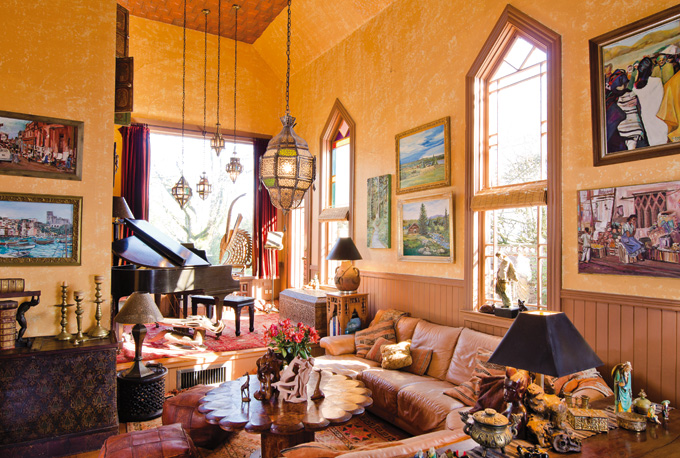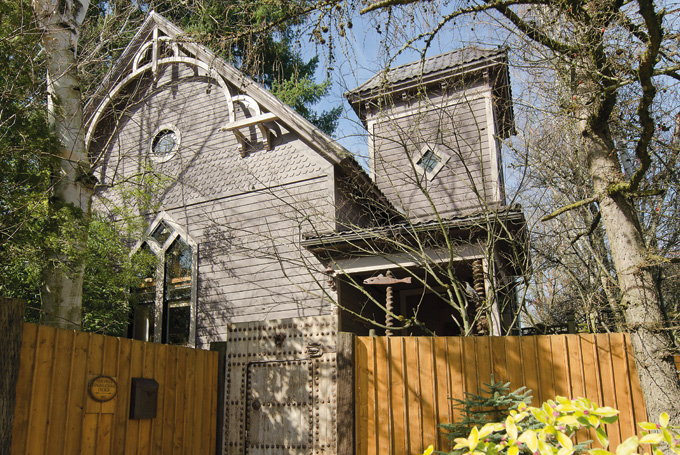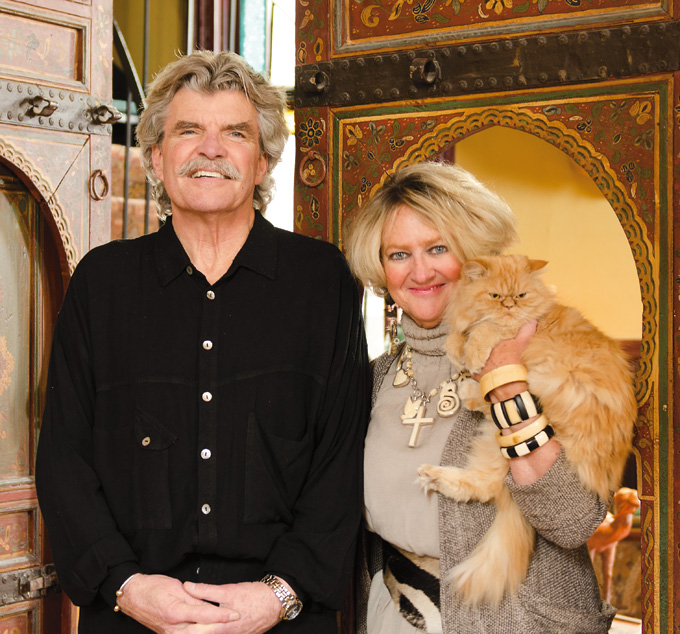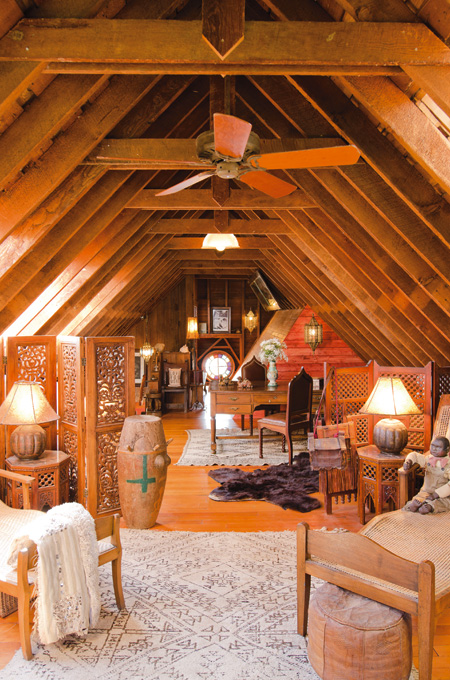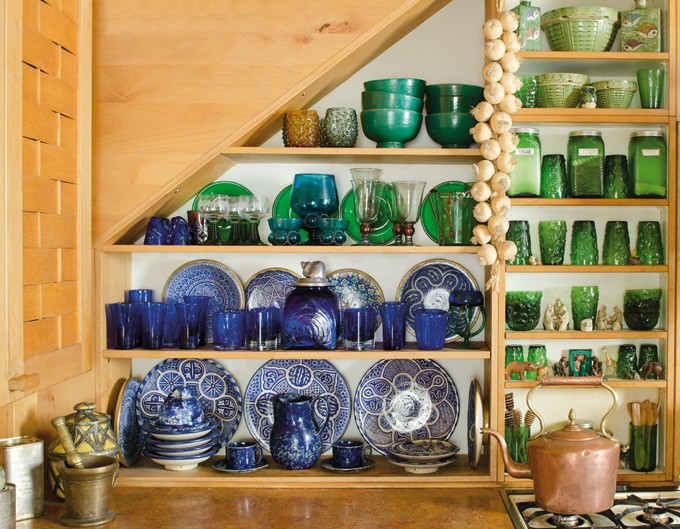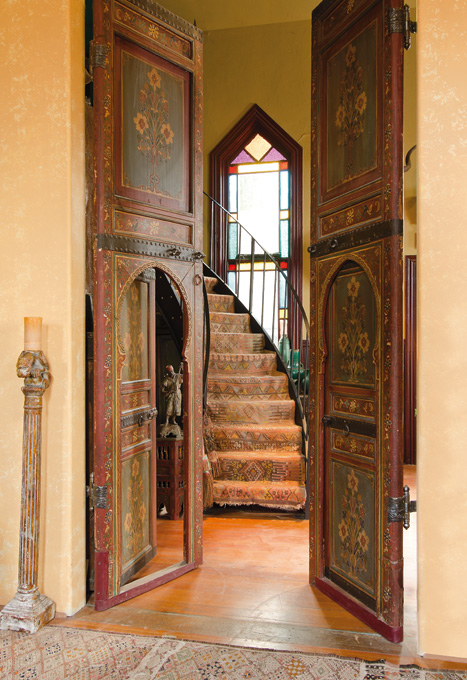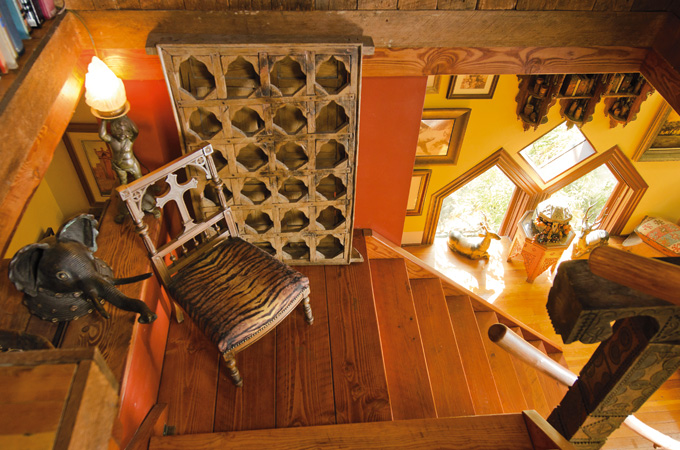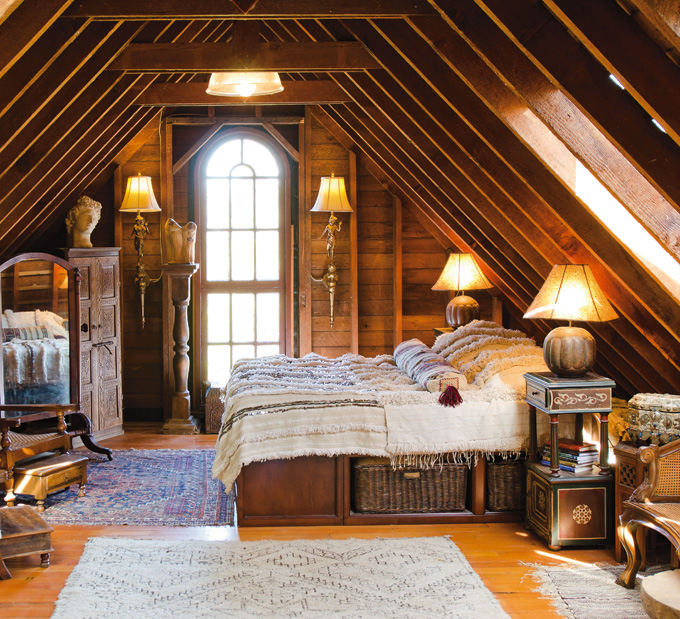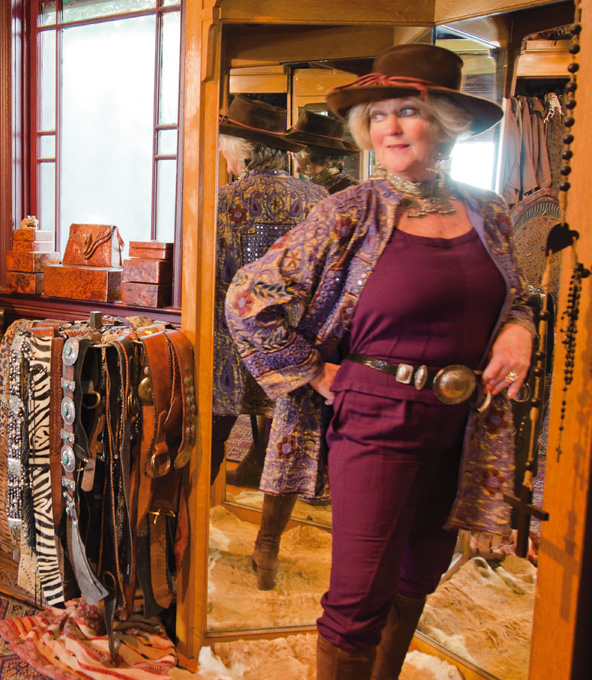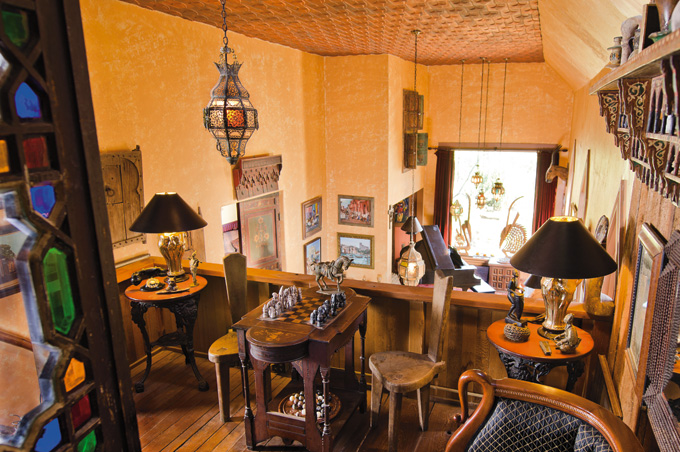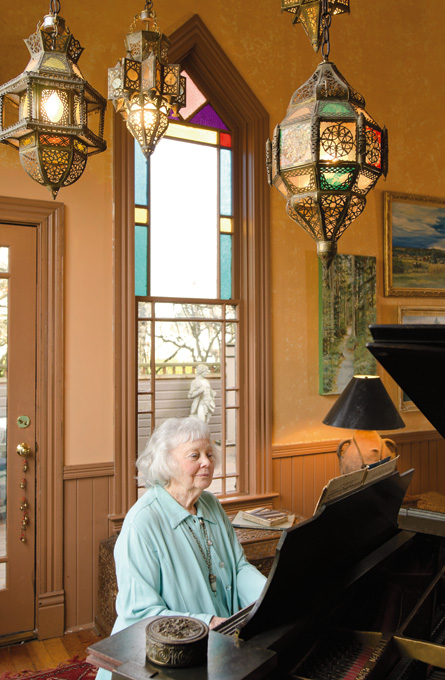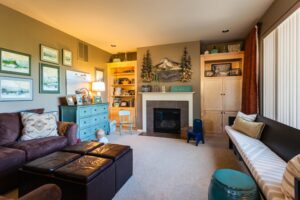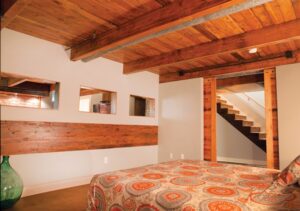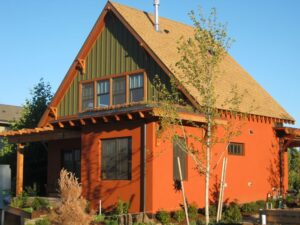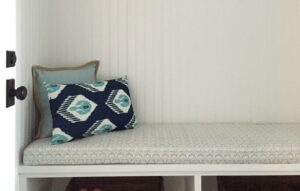{artsexylightbox}{/artsexylightbox}
Julie Olson has baths in the belfry. She’s not crazy. She just enjoys soaking in a cast-iron tub in the bell tower of the circa 1892 church she calls home.
Stained glass windows, a choir loft and the raised altar area are still evident in the wood-clad Milwaukie building. A wall divides the church lengthwise, where a center aisle might have been, all the way up through the choir loft. It helps break up the 5,000 square feet into manageable rooms for Olson, her partner, Ron Irwin, and Olson’s 94-year-old mother. Olson bought the church in 1993.
“After 25 years living in Morocco, a split-level home in the suburbs wasn’t going to cut it,” says Olson with a laugh.
{artsexylightbox}{/artsexylightbox}
The Ardenwald Congressional Church had changed hands twice when Olson purchased it from a commune of glass, wood and ceramics artists. For the free-spirited traveler who grew up surrounded by artists in Minnetonka, Minn., “It felt like coming home.”
Still, Olson was reluctant to leave Africa, where she’s manufactured her Jules of Morocco clothing line for 30 years. Olson still travels twice a year to Marrakech to oversee the business — her women’s label is sold in several U.S. boutiques, including two Jules of Morocco shops in the Portland metro area — but six years ago gave up her house there and shipped a container of Moroccan treasures to Portland. That’s when she got serious about turning the urban church into a personal sanctuary.
“Moroccan things seem to work in a church,” she says. “The two blend well. Anything that is done by hand and well-done marries with most environments.”
{artsexylightbox}{/artsexylightbox}
Rich red tribal carpets warm most of the floors. Ornately carved wood chairs and tables create cozy conversation areas. Brass light fixtures with colorful glass hang at various heights on chains from the 20-foot ceilings similar to those seen in many mosques. Most impressive are the 12-foot-tall interior doors that connect the two sides of the church divided by the previous owners with a wall.
“Camel doors,” Olson explains, “in case you want to bring your camel inside.”
Traditionally in Morocco, valuable dromedaries were led into family courtyards through such massive doorways. Smaller inset doors allow people easy access.
Carved wood posts that were once used by nomads to pitch their tents are repurposed on Olson’s stairway. Vintage embroidered and embellished white bridal capes form her bedspread. Olson attached legs to a Moroccan door to use as a side table, and she created a dramatic dressing room with still more carved doors.
“When you live in a third world country, you don’t even think of it as reuse,” she says. “There is no Home Depot. You reuse and repurpose.”
{artsexylightbox}{/artsexylightbox}
The attic of the church now serves as an enormous master bedroom. Olson wanted to maintain the exposed-wood ceiling and rafters. “I hate drywall,” she says, so she insulated the exterior, beneath the roof. “It works beautifully,” she says. “I would recommend it to anyone.” The old parsonage next door was remodeled and rented as an auxiliary dwelling unit. The basement of the church is a separate apartment for Olson’s mother. Thelma Olson, a former concert pianist and president of the Minnetonka Center for the Arts, feels at home in the creative surroundings. She can maintain her independence and still dine daily with her daughter and play Glow Worm, a favorite melody from the 1902 operetta Lysistrata, on her piano that sits on the raised altar area as though on an intimate stage.
The church grounds will once again play a traditional role this July as the setting of a wedding. Olson and Irwin are getting married. They met in 1998 at the Portland Art Museum, broke up in 2002 and recently reunited.
“It was love at second sight,” she jokes.
Friends are flying in from Morocco and France to celebrate. There will be big tents and bagpipes and kilts and great food and good spirits around the parsonage, churchyard and church.
“It’s got just such great vibes,” Olson says. “Maybe from having the Hallelujah Chorus sung for so many years.”



